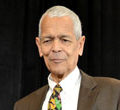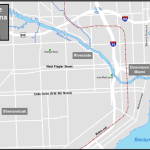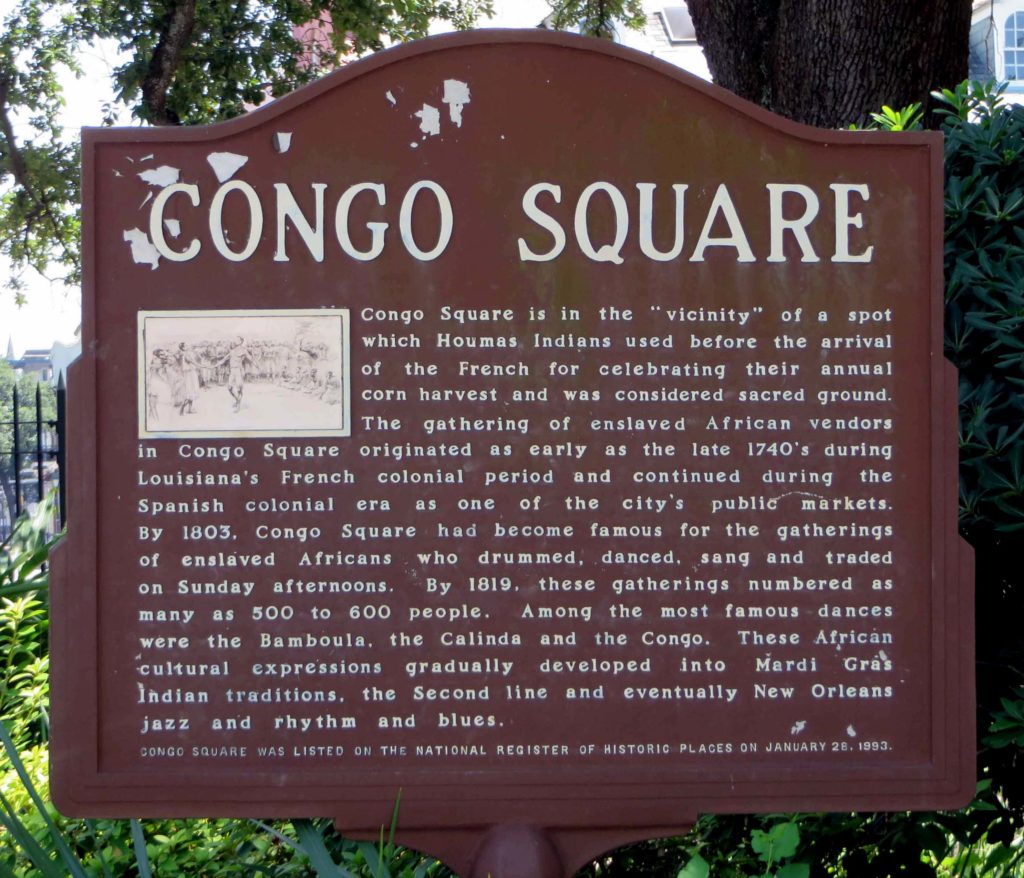New Books: October 2013
Every month the AAG compiles a list of newly-published books in geography and related areas. Some are selected for review in the AAG Review of Books.
Publishers are welcome to send new volumes to the Editor-in-Chief (Kent Mathewson, Editor-in-Chief, AAG Review of Books, Department of Geography and Anthropology, Louisiana State University, Baton Rouge, LA 70803).
Anyone interested in reviewing these or other titles should also contact the Editor-in-Chief.
- A Vineyard Odyssey: The Organic Fight to Save Wine from the Ravages of Nature by Kiger, John (Rowman and Littlefield 2013, https://rowman.com/ISBN/9781442221901)
-
About the Hearth: Perspectives on the Home, Hearth and Household in the Circumpolar North by Anderson, David G., Robert P. Wishart, and Virginie Vaté, eds (Berghahn Books 2013, http://www.berghahnbooks.com/title.php?rowtag=AndersonAbout)
-
Africa’s Moment by Severino, Jean-Michel, Ray Olivier (Polity Books 2013, http://www.polity.co.uk/book.asp?ref=9780745651576)
-
Anarchy, Geography, Modernity: Selected Writings of Elisée Reclus by Clark, John and Camille Martin (PM Press 2013, https://secure.pmpress.org/index.php?l=product_detail&p=565)
-
Bagels and Grits: A Jew on the Bayou by Moses, Jennifer Anne (University of Wisconsin Press 2013, http://uwpress.wisc.edu/books/4301.htm)
-
California through Russian Eyes, 1806–1848 by Gibson, James R., ed (The Arthur H. Clark Co. 2013, http://www.oupress.com/ECommerce/Book/Detail/1779/california through russian eyes 1806 1848)
-
Chronicling the West for Harper’s: Coast to Coast with Frenzeny & Tavernier in 1873–1874 by Chalmers, Claudine (University of Oklahoma Press 2013, http://www.oupress.com/ECommerce/Book/Detail/1782/chronicling the west for harper 27s)
-
Coffee: A Comprehensive Guide to the Bean, the Beverage, and the Industry by Thurston, Robert W., Jonathan Morris, and Shawn Steinman, eds (Rowman and Littlefield 2013, https://rowman.com/ISBN/9781442214408)
-
Corporate Sovereignty: Law and Government under Capitalism by Barkan, Joshua (University of Minnesota Press 2013, https://www.upress.umn.edu/book-division/books/corporate-sovereignty)
-
Crossings: Africa, the Americas and the Atlantic Slave Trade by Walvin, James (University of Chicago Press 2013, http://press.uchicago.edu/ucp/books/book/distributed/C/bo16826299.html)
-
Cuisine Empire: Cooking in World History by Laudan, Rachel (University of California Press 2013, http://www.ucpress.edu/book.php?isbn=9780520266452)
-
Developing the Rivers of East and West Africa: An Environmental History by Hoag, Heather J (Bloomsbury 2013, http://www.bloomsbury.com/us/developing-the-rivers-of-east-and-west-africa-9781441155405/)
-
Early and Middle Woodland Landscapes of the Southeast by Wright, Alice P., and Edward R. Henry (University Press of Florida 2013, http://upf.com/book.asp?id=WRIGH002)
-
Encountering Gorillas: A Chronicle of Discovery, Exploitation, Understanding, and Survival by Newman, James L. (Rowman and Littlefield 2013, https://rowman.com/ISBN/978-1-4422-1955-7)
-
Faith Based: Religious Neoliberalism and the Politics of Welfare in the United States by Hackworth, Jason (University of Georgia Press 2012, http://www.ugapress.org/index.php/books/faith_based)
-
The Gaia Hypothesis: Science on a Pagan Planet by Ruse, Michael (University of Chicago Press 2013, http://press.uchicago.edu/ucp/books/book/chicago/G/bo10665496.html)
-
Geographies of Race and Food: Fields, Bodies, Markets by Slocum, Rachel, and Arun Saldanha, eds (Ashgate 2013, http://www.ashgate.com/isbn/9781409469278)
-
Geopiracy: Oaxaca, Militant Empiricism, and Geographical Thought by Wainwright, Joel (Palgrave Macmillan 2012, http://www.palgraveconnect.com/pc/doifinder/10.1057/9781137301758)
-
GPS Declassified: From Smart Bombs to Smartphones by Easton, Richard D. and Eric F. Frazier (Potomac Books 2013, http://www.potomacbooksinc.com/Books/BookDetail.aspx?productID=293771)
-
The Great Ocean: Pacific Worlds from Captain Cook to the Gold Rush by Igler, David (Oxford University Press 2013, http://global.oup.com/academic/product/the-great-ocean-9780199914951;jsessionid=7EB929AB73BF0B303CEA3C61E6988430?cc=us&lang=en&)
-
Greater Mekong Subregion: From Geographical to Socio-economic Integration by Shrestha, Omkar Lal and Aekapol Chongvilaivan (Institute of Southeast Asian Studies 2013, https://bookshop.iseas.edu.sg/publication/1242)
-
The Handbook of Food Research by Murcott, Anne, Warren Belasco, Peter Jackson (Bloomsbury 2013, http://www.bloomsbury.com/us/the-handbook-of-food-research-9781847889164/)
-
The Hydropolitics of Dams: Engineering or Ecosystems? by Everard, Mark (Zed Books 2013, http://www.zedbooks.co.uk/node/11833)
-
Landscapes of Mobility: Culture, Politics, and Placemaking by Sen, Arijit and Jennifer Johung, eds (Ashgate 2013, http://www.ashgate.com/isbn/9781409442813)
-
The Last Days of the Rainbelt by Wishart, David J (University of Nebraska Press 2013, http://www.nebraskapress.unl.edu/product/Last-Days-of-the-Rainbelt,675734.aspx)
-
Latin American Development by Cupples, Julie (Routledge 2013, http://www.routledge.com/books/details/9780415680622/)
-
Learning, Capability Building and Innovation for Development by Dutrénit, Gabriela, Keun Lee, Richard Nelson, Luc Soete, and Alexandre O. Vera-Cruz (Palgrave Macmillan 2013, http://us.macmillan.com/learningcapabilitybuildingandinnovationfordevelopment/GabrielaDutrénit)
-
Making in America: From Innovation to Market by Berger, Suzanne (MIT Press 2013, https://mitpress.mit.edu/books/making-america)
-
Mammoths and the Environment by Ukraintseva, Valentina V (Cambridge University Press 2013, http://www.cambridge.org/us/academic/subjects/life-sciences/evolutionary-biology/mammoths-and-environment)
-
Masculinities in Chinese History by Hinsch, Bret (Rowman and Littlefield 2013, https://rowman.com/ISBN/978-1-4422-2235-9)
-
Modeling Electric Distribution with GIS by Meehan, Bill (ESRI Press 2013, http://esripress.esri.com/display/index.cfm?fuseaction=display&websiteID=223&moduleID=0)
-
Monitoring Biodiversity: Lessons from a Trans-Andean Megaproject (Bilingual) by Alonso, Alfonso, Francisco Dallmeier, and Grace P. Servat, eds (Smithsonian Institution Press 2013, http://scholarlypress.si.edu/content.cfm?page=new)
-
Mountain Geography: Physical and Human Dimensions by Price, Martin F., Alton C. Byers, Donald A. Friend, Thomas Kohler, and Larry W. Price, eds (University of California Press 2013, http://www.ucpress.edu/book.php?isbn=9780520254312)
-
Moving Safely: Crime and Perceived Safety in Stockholm’s Subway Stations by Ceccato, Vania (Lexington Books 2013, https://rowman.com/ISBN/9780739177617)
-
Nashville in the New Millennium: Immigrant Settlement, Urban Transformation, and Social Belonging by Winders, Jamie (Russell Sage Foundation 2013, https://www.russellsage.org/publications/nashville-new-millennium)
-
New Developments in Spatial Economics and Economic Geography by McCann, Philip (Edward Elgar 2013, http://www.e-elgar.co.uk/bookentry_main.lasso?id=13494)
-
The New Enclosures: Critical Perspectives on Corporate Land Deals by White, Ben, Saturnino Borras Jr., Ruth Hall, Ian Scoones, Wendy Wolford, eds (Routledge 2013, http://www.routledge.com/books/details/9780415823746/)
-
Of Palm Wine, Women and War: The Mongolian Naval Expedition to Java in the 13th Century by Bade, David (Institute of Southeast Asian Studies 2013, https://bookshop.iseas.edu.sg/publication/1909)
-
Oil in the Environment: Legacies and Lessons of the Exxon Valdez Oil Spill by Wiens, John A (Cambridge University Press 2013, http://www.cambridge.org/us/academic/subjects/life-sciences/natural-resource-management-agriculture-horticulture-and/oil-environment-legacies-and-lessons-exxon-valdez-oil-spill)
-
Painters and the American West, Vol. II by Hunt, Sarah A., James P. Rhonda, Joan Carpenter Troccoli, and John Wilmerding (University of Oklahoma Press 2013, http://www.oupress.com/ECommerce/Book/Detail/1801/painters and the american west vol 2)
-
The Palm Oil Controversy in Southeast Asia: A Transnational Perspective by Pye, Oliver and Jayati Bhattacharya (Institute of Southeast Asian Studies 2012, https://bookshop.iseas.edu.sg/publication/1238)
-
The Pecan: A History of America’s Native Nut by McWilliams, James (University of Texas Press 2013, http://utpress.utexas.edu/index.php/books/mcwpec)
-
Pests in the City: Flies, Bedbugs, Cockroaches, and Rats by Biehler, Dawn Day (University of Washington Press 2013, http://www.washington.edu/uwpress/search/books/BIEFLI.html)
-
The Plant Hunters: The Adventures of the World’s Greatest Botanical Explorers by Fry, Carolyn (University of Chicago Press 2013, http://press.uchicago.edu/ucp/books/book/chicago/P/bo17224006.html)
-
Returns: Becoming Indigenous in the Twenty-First Century by Clifford, James (Harvard University Press 2013, http://www.hup.harvard.edu/catalog.php?isbn=9780674724921)
-
Romantic Geography: In Search of the Sublime Landscape by Tuan, Yi-Fu (University of Wisconsin Press 2013, http://uwpress.wisc.edu/books/5252.htm)
-
Science, Philosophy and Physical Geography, 2nd Edition by Inkpen, Robert and Graham Wilson (Routledge 2013, http://www.routledge.com/books/details/9780415679664/)
-
Second Cities: Globalization and Local Politics in Manchester and Philadelphia by Hodos, Jerome I (Temple University Press 2013, http://www.temple.edu/tempress/titles/2081_reg.html)
-
Seeds, Science, and Struggle: The Global Politics of Transgenic Crops by Kinchy, Abby (MIT Press 2012, https://mitpress.mit.edu/books/seeds-science-and-struggle-0)
-
Social Capital and Rural Development in the Knowledge Society by Westlund, Hans and Kiyoshi Kobayashi, eds (Edward Elgar 2013, http://www.e-elgar.co.uk/bookentry_main.lasso?currency=US&id=15261)
-
The Social Life of Water by Wagner, John R (Berghahn Books 2013, http://www.berghahnbooks.com/title.php?rowtag=WagnerSocial)
-
Space, Place, and Violence: Violence and the Embodied Geographies of Race, Sex, and Gender by Tyner, James A (Routledge 2012, http://www.routledge.com/books/details/9780415880855/)
-
Spatial Questions: Cultural Topologies and Social Spatialisation by Shields, Rob (SAGE 2013, http://www.sagepub.com/booksProdDesc.nav?prodId=Book233758)
-
“Strange Lands and Different Peoples”: Spaniards and Indians in Colonial Guatemala by Lovell, W. George and Christopher H. Lutz (University of Oklahoma Press 2013, http://www.oupress.com/ECommerce/Book/Detail/1771/strange lands and different peoples)
-
Taken by Storm: A Social and Meteorological History of the Great New England Hurricane by Avilés, Lourdes B (American Meteorological Society 2013, https://secure.ametsoc.org/amsbookstore/viewProductInfo.cfm?productID=95)
-
Tropic of Hopes: California, Florida, and the Selling of American Paradise, 1869–1929 by Knight, Henry (University Press of Florida 2013, http://upf.com/book.asp?id=KNIGH002)
-
Tropical Dry Forests in the Americas: Ecology, Conservation, and Management by Sanchez-Azofeifa, Arturo, Jennifer S. Powers, Geraldo W. Fernandes, Mauricio Quesada, eds (CRC Press 2013, http://www.crcpress.com/product/isbn/9781466512009)
-
Water Without Borders? Canada, the United States, and Shared Waters by Norman, Emma S., Alice Cohen, and Karen Bakker (University of Toronto Press 2013, http://www.utppublishing.com/Water-without-Borders-Canada-the-United-States-and-Shared-Waters.html)
-
Writing Food History: A Global Perspective by Claflin, Kyri W. and Peter Scholliers, eds (Bloomsbury 2012, http://www.bloomsbury.com/us/writing-food-history-9781847888082/)


 The Tower Theater with its Art Deco style has been a landmark of the neighborhood since it first opened its doors in 1926. Located along Calle Ocho and 15th avenue, the road was a two way street at the time hence the sign of the theater was built at an angle so that it was easy for the drivers to glance quickly at the listing of shows. In the 1960’s with the growth of the Cuban population, the theater was the first one to offer titles in Spanish in Miami-Dade County. Picture Credit: Hilton Cordoba
The Tower Theater with its Art Deco style has been a landmark of the neighborhood since it first opened its doors in 1926. Located along Calle Ocho and 15th avenue, the road was a two way street at the time hence the sign of the theater was built at an angle so that it was easy for the drivers to glance quickly at the listing of shows. In the 1960’s with the growth of the Cuban population, the theater was the first one to offer titles in Spanish in Miami-Dade County. Picture Credit: Hilton Cordoba A shot of the Miami River from Jose Marti Park with the I-95 overpass in the background. In the late 1800’s the Miccosukee people navigated the river from the Everglades to come to trade and exchange items with the white settlers. By 1980, the I-95 overpass was the temporary home where the U.S. government created makeshift camps for Cuban refugees that arrived during the Mariel boatlift. In 2008, Jose Marti Park with the Miami River in the background were the setting for a scene in the comedy-drama film Marley & Me. Picture Credit: Hilton Cordoba
A shot of the Miami River from Jose Marti Park with the I-95 overpass in the background. In the late 1800’s the Miccosukee people navigated the river from the Everglades to come to trade and exchange items with the white settlers. By 1980, the I-95 overpass was the temporary home where the U.S. government created makeshift camps for Cuban refugees that arrived during the Mariel boatlift. In 2008, Jose Marti Park with the Miami River in the background were the setting for a scene in the comedy-drama film Marley & Me. Picture Credit: Hilton Cordoba Fritangas are found throughout the streetscape of Little Havana. These restaurants are not just about the ethnic dishes but also a place to gather news about the homeland or the local community, buy phone cards to call relatives, a place to find souvenirs and delicacies imported from Nicaragua, and even a place of worship on the evening of every December 7th when Nicaraguans celebrate ‘la griteria’ (a chanting to the Immaculate Concepcion of the Virgin Mary, a tradition that dates back to colonial times). Picture Credit: Hilton Cordoba
Fritangas are found throughout the streetscape of Little Havana. These restaurants are not just about the ethnic dishes but also a place to gather news about the homeland or the local community, buy phone cards to call relatives, a place to find souvenirs and delicacies imported from Nicaragua, and even a place of worship on the evening of every December 7th when Nicaraguans celebrate ‘la griteria’ (a chanting to the Immaculate Concepcion of the Virgin Mary, a tradition that dates back to colonial times). Picture Credit: Hilton Cordoba


